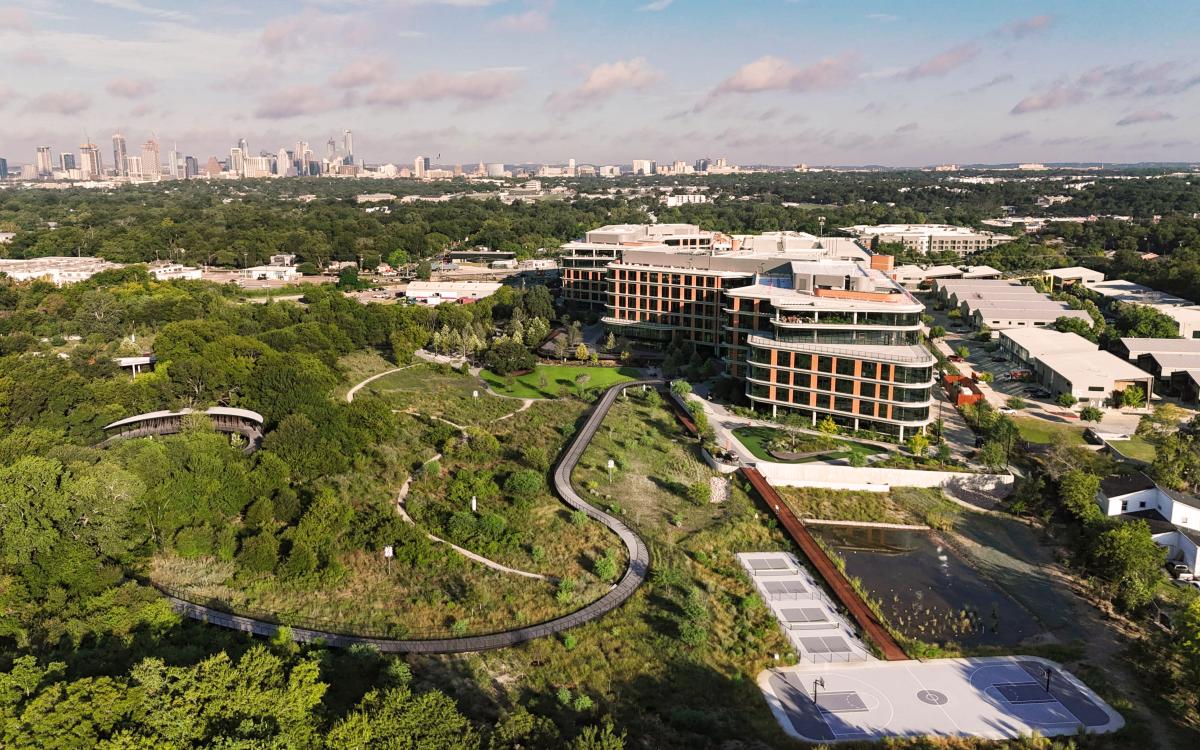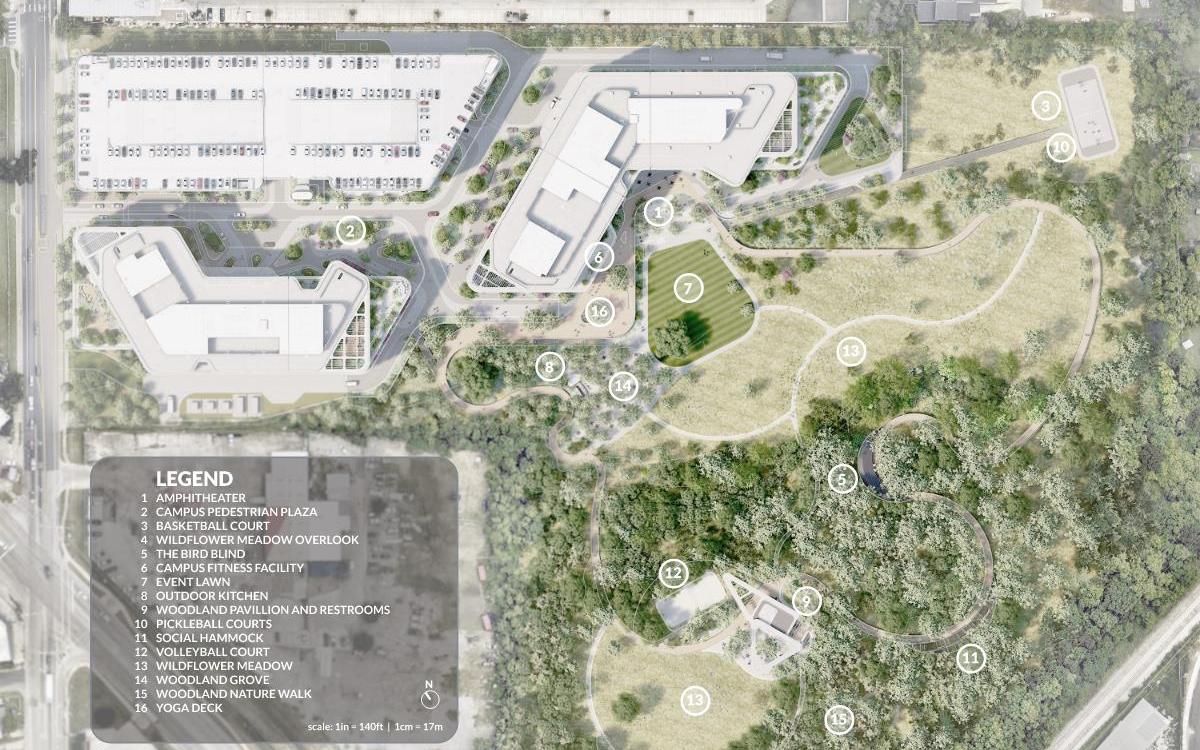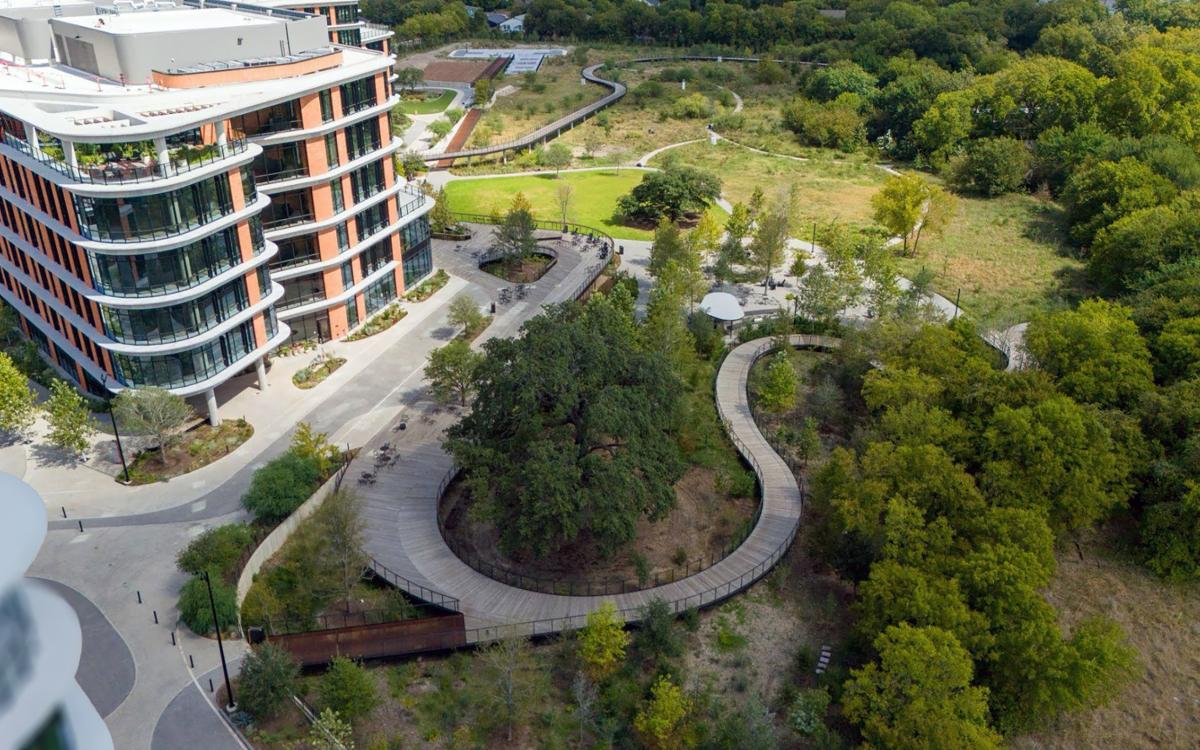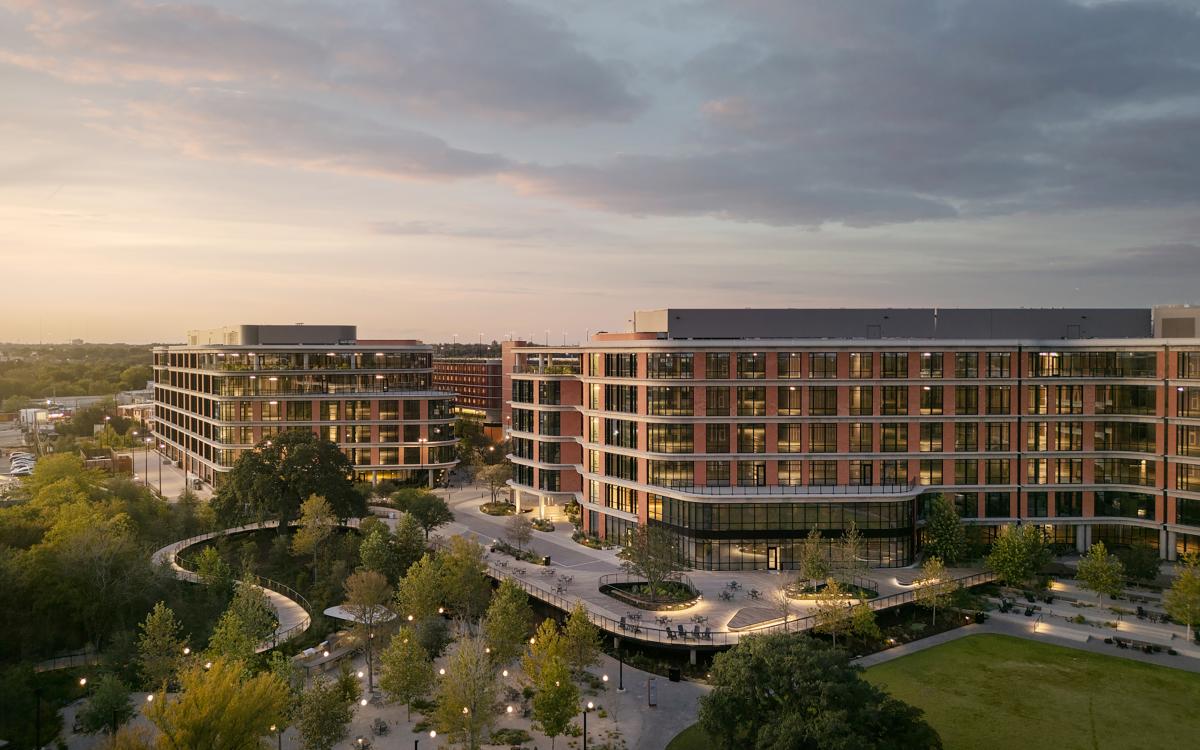Austin, TX
United States
Springdale Green is a landmark regenerative project that transformed a 30-acre former industrial site in East Austin into a thriving ecological workplace campus. Once dominated by invasive species and plagued by chronic flooding, the site now supports a biodiverse, resilient native prairie and riparian woodland, while seamlessly integrating human-centered design and wellness amenities.
Springdale Green’s redevelopment was grounded in SITES principles, with sensitive ecological restoration, invasive species removal and mitigation, strategic soil rehabilitation, and climate-adaptive stormwater management. The site’s restoration includes over 15 acres of native seeding, 4,000 newly planted trees, reintroducing pollinator meadows, and the transplanting two heritage oak trees. These interventions not only support urban biodiversity but also improve air quality, mitigate heat, and offer meaningful connections between people and place.
A 1-kilometer boardwalk weaves through the restored habitat, fostering deep engagement with nature while protecting sensitive ecologies. Wellness features—including a yoga deck, woodland pavilion, bird blind, and rooftop gardens—further reinforce the project’s commitment to health and well-being.
Water conservation is at the heart of Springdale Green’s sustainable infrastructure. A 650,000-gallon cistern collects rainwater and HVAC condensate, eliminating potable water use for irrigation. Green infrastructure, including floodable meadows, rain gardens, and biofiltration basins, restores site hydrology while managing runoff for both the property and its surrounding community. The result: nearly 70% of the site filters stormwater, sequestering more than 45 tons of CO₂ annually.
The project demonstrates how reimagining post-industrial urban land can lead to an environmental and social renaissance—creating a new model for regenerative development that places ecological health, resilience, and human experience at the core of design.
Sustainable Features of Springdale Green
- Potable water reduction: 100% of site irrigation needs met through a 650,000-gallon cistern collecting HVAC condensate and rainwater—eliminating potable water use.Native and adaptive vegetation: 15 acres of native prairie and riparian woodland seeding; 75,000 native plants; 4,000 trees planted. All native plant material was grown locally to reduce transportation emissions and ensure regional adaptability.
- Urban biodiversity: Introduced 120 bird boxes, pollinator meadows, restored woodlands and riparian environments, preserved the existing mature Pecan Woodland and transplanted two heritage live oaks (one being over 300-year-old).
- Structural Urban Soil Design: The right of way streetscape and urban plaza design utilize the largest Silva Cell installation in Austin to provide upwards of 1000cu ft of soil per tree to enhance long-term tree health and enhanced urban stormwater infiltration.
- Soil regeneration: Strategic assessment, stockpiling, reuse and structural and biological enhancement of the sites native soils with Vegetative and Soil Protection Zones (VSPZs) in place throughout construction.
- Stormwater management: Bioswales, bio-retention basins, raingardens, and floodable meadows manage and treat 100% of on-site runoff. Additionally, an inter-basin transfer diverts stormwater from the adjacent residential neighborhood on to the restored campus meadows to mitigate frequent flooding.
- Impervious cover reduction: With only 6 of the 30 acreas being built on the campus demonstrates a significant reduction of the hardscape footprint and enhances natural infiltration and local aquifer recharge and reduces the urban heat island effect of this urban campus.
- Carbon sequestration: Nearly 70% of the site actively filters stormwater and sequesters more than 45 tons of CO₂ annually through the meadows and restored woodlands.
- Green roofs: Over an acre of rooftop gardens provide additional habitat, reduce building energy loads, and extend green space into vertical zones.
- Energy and lighting: Site-wide dark-sky compliant lighting reduces light pollution and protects nocturnal species.
- Sustainable materials: Low-impact, regionally sourced, and durable materials used across all site infrastructure.
- Human health and well-being: 1 km experiential boardwalk, rooftop gardens, yoga deck, woodland pavilion, bird blind, and social hammocks create diverse wellness opportunities.
- LEED and SITES synergy: Designed in parallel for dual LEED and SITES certification, aligning building and landscape sustainability goals.
“SITES certification validates our belief that landscapes can restore ecosystems, improve human well-being, and lead the way toward regenerative design in cities," said Daniel Woodroffe, President, dwg. "Springdale Green sets a new standard for how design can repair and reconnect—ecologically, socially, and economically.”
Project team
- Client: Jay Paul Company
- Architecture Office: Gensler
- Landscape Architecture Office: dwg.
- Civil Engineering: Kimley-Horn
- Structural Engineering: IMEG Corp
- Electrical Engineering: EEA
- Irrigation: Masuen
- Soil Science: Olsson Associates
- Ecologist: Siglo Group
- Geotechnical Engineering: Terracon
- Lighting Design: Tillotson
- Land Use Attorney (PUD): Armbrust and Brown
- General Contractor: Level 10
Photos credit: 1-3 dwg., 4-5 Kristian Alveo





